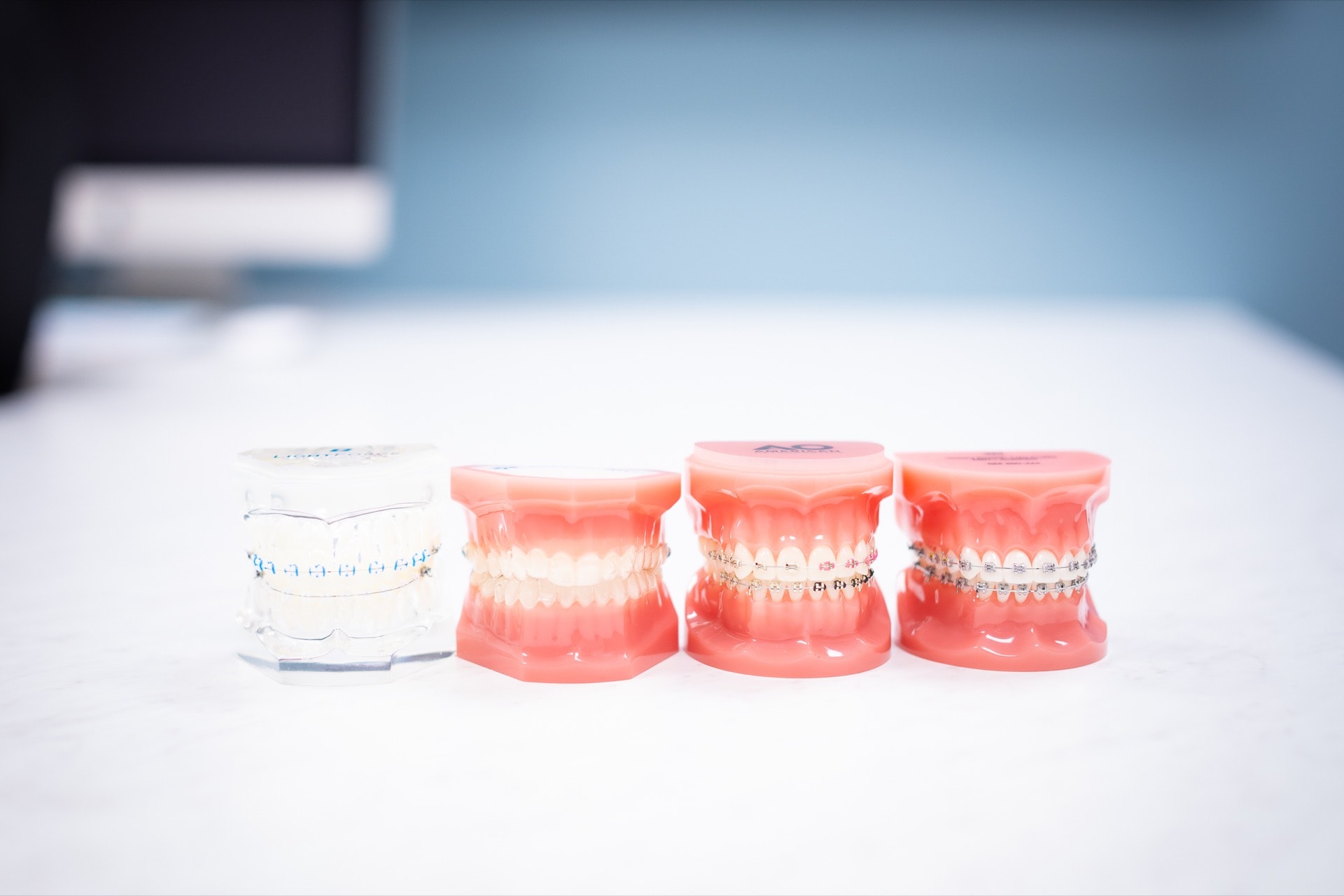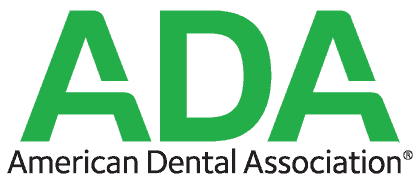Different Types of Braces? Top Facts You Need to Know
Are you ready for braces? Are you ready for a beautiful, new smile thanks to braces treatment at Hentscher-Johnson Orthodontics? What type of braces are you ready to wear?
Wait…TYPE OF BRACES?
That’s right! You have more than one option when it comes to braces today. Braces treatment has come very far in the last few decades from the old, bulky, metal-only braces. Today’s braces are smaller and more efficient and come in different types, from self-ligating braces to lingual braces to clear ceramic braces. Of course, metal braces are still around, but they’re better than they once were.
At Hentscher-Johnson Orthodontics, we offer several types of braces because we know traditional metal braces don’t fit everyone’s lifestyle. So which one is right for you? Let’s explore the different types of braces to find out!
Traditional Metal Braces
Traditional metal braces are similar to your parents’ braces, but today’s braces have improved over the years. As orthodontic techniques and technology have improved, traditional metal braces have gotten smaller and work better than the old braces.
Where your parents might have worn their braces for 3-4 years, most patients are done with traditional metal braces in 12-24 months. That’s because today’s braces are placed more precisely to offer maximum moving power with minimal discomfort.
Metal braces are made up of stainless steel brackets that go on the front teeth and bands that fit over the back molars. An archwire fits into groves in the brackets and slides into tiny round tubes at the back. The archwire is held to the brackets by small elastics that fit over the archwire and wrap around the brackets. While they work well, we use a more modern version of metal braces that do the same work in less time.
What are the advantages of traditional metal braces?
- Usually less expensive than other braces
- A tried-and-true method to straighten teeth
- Can correct nearly any dental issue, no matter how severe
- Often work when other types of braces or clear aligners don’t
- They are not removable, so there is no chance of losing them
- Metal components are durable and don’t stain
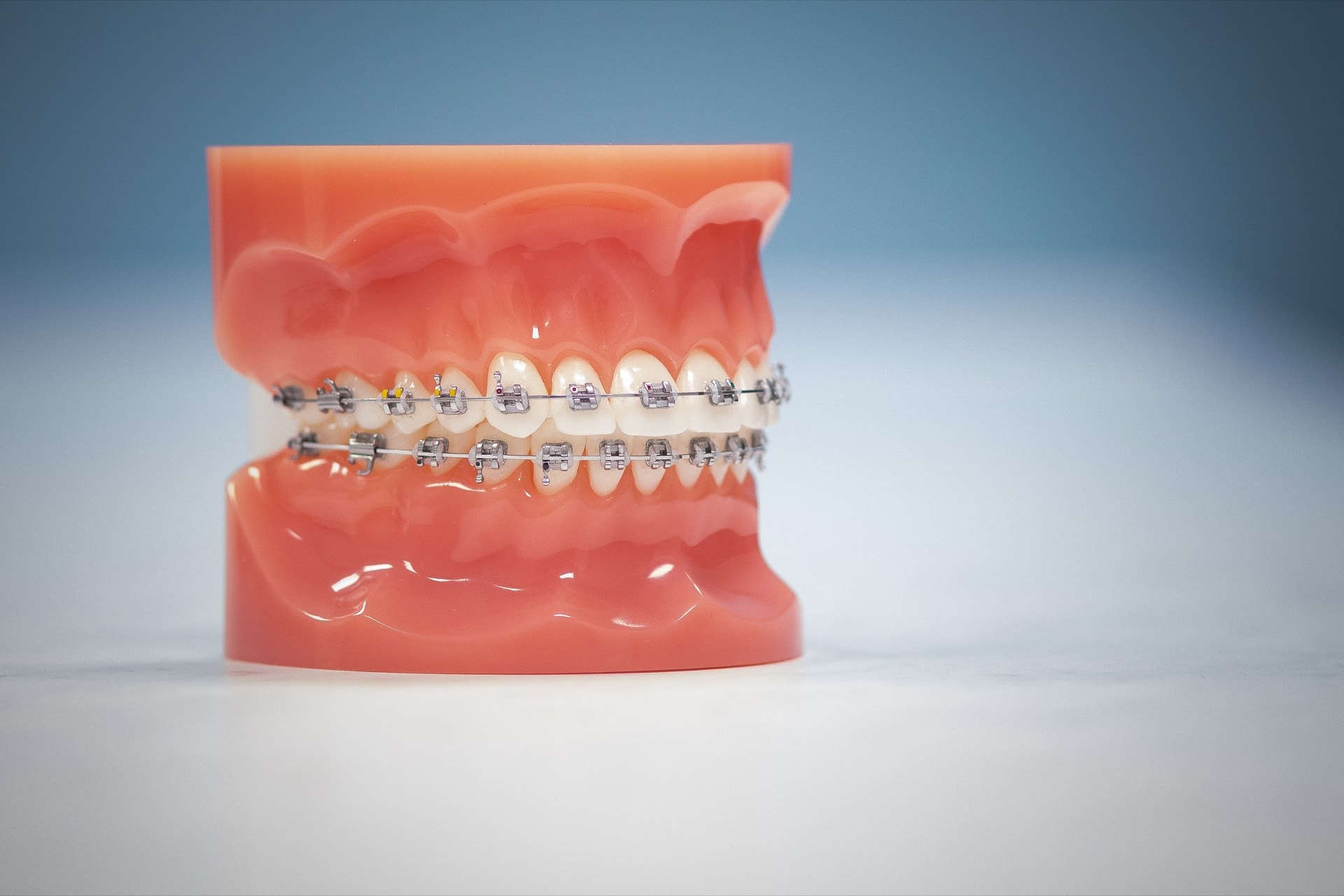
Self-Ligating Braces
At Hentscher-Johnson Orthodontics, we use self-ligating metal braces because we’ve found them to be more comfortable and more efficient for our patients. Unlike traditional metal braces, self-ligating braces don’t use elastics to hold the archwire to the brackets. Instead, the brackets have a little “door” that holds the archwire and allows it to move with less friction. The less friction makes it more gentle and more comfortable for patients.
Self-ligating braces also move your teeth faster than traditional braces. They apply gentle pressure, but the brackets are laid with such precision that they have the maximum amount of movement with the pressure applied by the archwire. Patients usually shave months off their treatment with self-ligating braces compared to traditional metal braces.
The advantages of self-ligating braces:
- Don’t use elastics to hold the archwires in place
- Less friction, which means more comfort
- Fewer office visits are needed
- Placed for maximum efficiency
- Usually worn for a shorter time than traditional metal braces
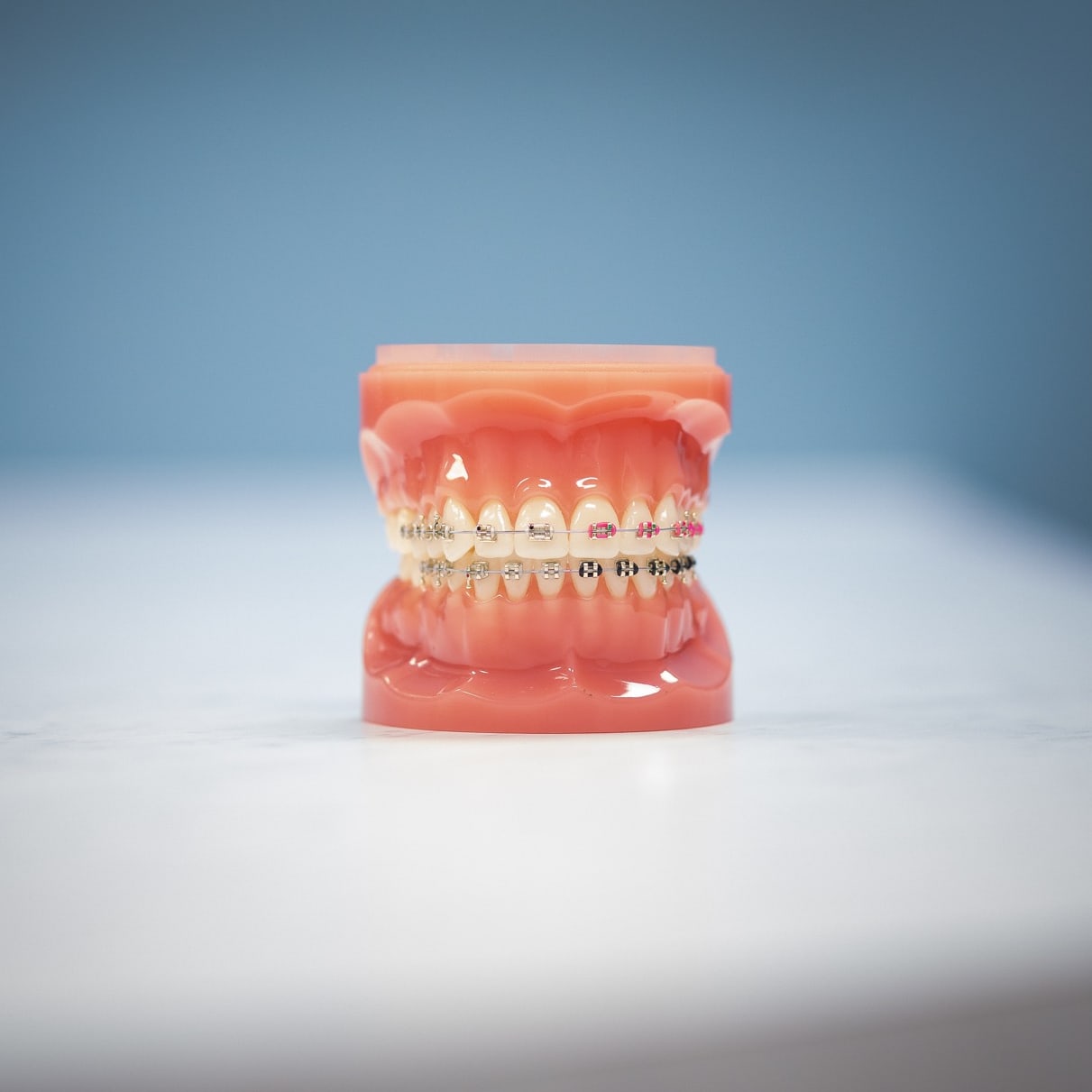
Clear Ceramic Braces
Clear braces began being offered to patients in the late 1980s, and they’ve grown in popularity ever since. Today’s clear braces are made of a ceramic material that blends in with the natural color of the teeth. Clear braces are far less visible on your teeth than traditional metal braces. That may be why our patients love them so much!
They may also enjoy the comfort of clear ceramic braces. The edges are rounded and smooth, which means patients experience less irritation to their lips, cheeks, and tongue than with the rougher metal braces. Despite the differences, they work the same as metal braces, providing great moving power to create a beautiful new smile!
The advantages of clear braces:
- Ceramic brackets can be customized close to natural tooth color
- Rounded brackets are more comfortable
- Lighter brackets are harder to see on the teeth
- Just as powerful as traditional metal braces
- Stain resistant despite clear appearance
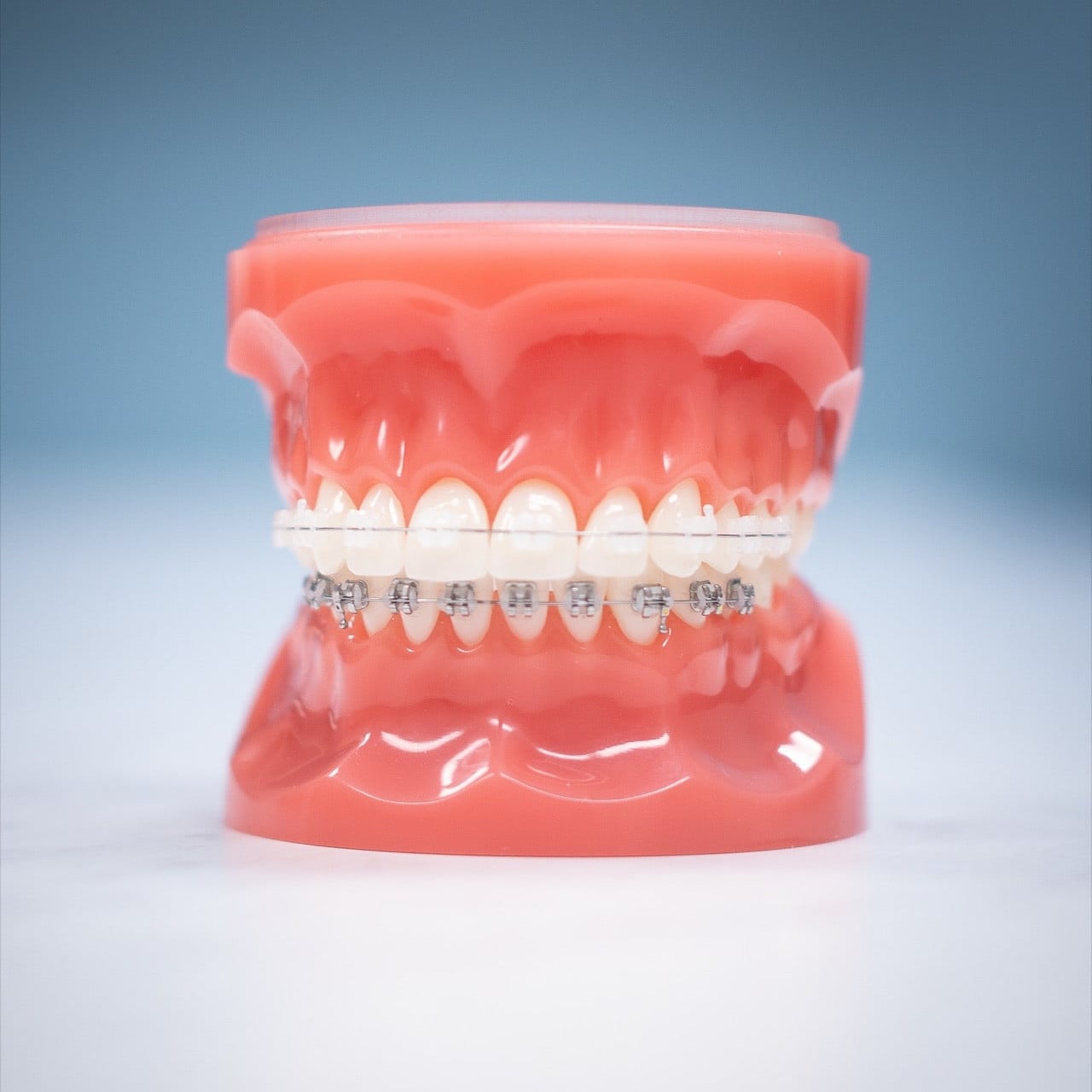
Lingual Braces
Lingual braces are like metal braces, but instead of going on the outside of the teeth, they are placed on the inside (or tongue side) of the teeth. Lingual braces have the advantage of being nearly invisible unless you break out a big yawn in front of someone.
Many adult patients are interested in our lingual braces because they’re self-conscious about being seen as an adult with a “mouthful of metal.” Those who can’t or don’t want to use clear aligners often find lingual braces are a better option for them.
However, lingual braces aren’t for everyone. Some more complex cases may need more traditional braces. They’re also not good for those who can’t avoid hard or sticky foods, which can damage lingual braces.
The advantages of lingual braces:
- Nearly impossible to see
- Great for mild cases
- Good for those who are self-conscious about wearing braces
- Great option for adults
Clear Aligners
Though they aren’t technically braces, clear aligners are another option for creating the smile of your dreams. We offer clear aligner treatment with Invisalign and 3M Clarity aligners.
Clear aligners often give you a new smile in less time than traditional braces. However, clear aligners aren’t for everyone. Severe dental cases aren’t great candidates for clear aligners; they do better with braces.
Are you a good candidate for clear aligners? Visit us in our Columbia, IL, or Waterloo, IL, office and find out!
The advantages of Invisalign or 3M Clarity aligners:
- Clear appearance makes them difficult to see
- Custom-molded to fit your teeth
- Removable for eating, brushing, and flossing
- No food restrictions!
- Great for all but the most severe cases
- Treatment time is shorter than braces, averaging 9-15 months
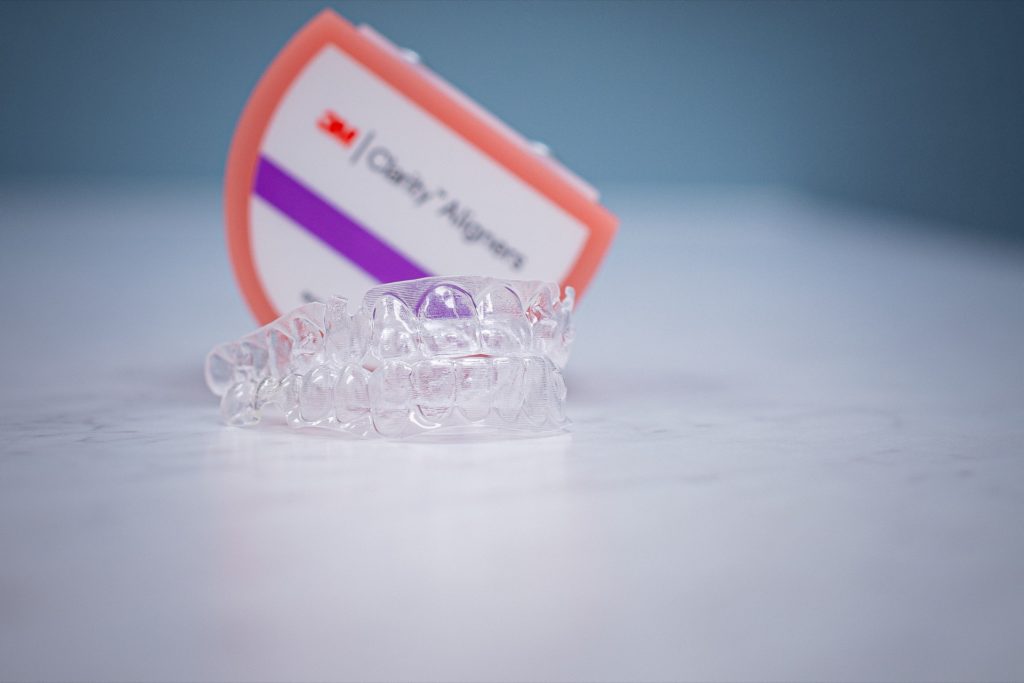
Braces Treatment in Colombia, IL
Which type of braces is right for you? During our free, no-obligation consultation, you can find out what option is best for you. Start with a virtual consultation, and we’ll help you set up an appointment for a thorough evaluation. We’ll let you know the best type of braces for you!

